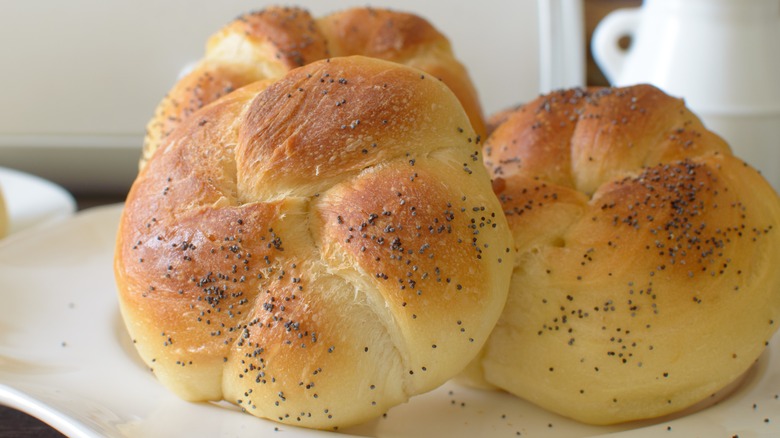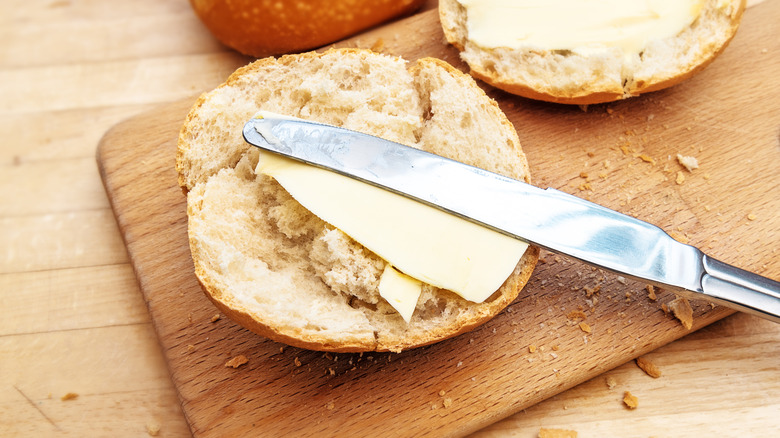The Humble Buttered Roll Is A NYC Breakfast Staple
When the sun rises and early morning commuters awaken in New York City, so do the city's breakfast carts, delis, and bodegas. Coffee starts to brew, car horns begin to blare, and these dawn-breaking businesses prepare for their inevitable foot traffic. Their bagels and donuts get delivered and are displayed right next to unassuming bread rolls that don't look nearly as enticing as their neighboring frosted pastries and sesame-flecked bagels. But these rolls are as in demand by New Yorkers as a cup of "coffee, regular" (aka coffee with milk and two sugars). One of these rolls, split in half and slathered with butter, comprises the breakfast of countless people in the Big Apple, from Wall Street tycoons to construction workers. Cheap, filling, and undeniably timeless, the buttered roll (also known as hard rolls) is, perhaps, as iconic to New York locals as the blue paper cups their coffee comes in.
In his song, "Living in America," James Brown gives a nod to the meal in the tune that praises hard-working, fast-paced America: "All night diners keep you awake, hey, on black coffee and a hard roll," he wails. Bread and butter is hardly an original concept, but for breakfast? You're more likely to experience this in places like Germany and France than in most of America, but of course, New York is not like most of America. The city's buttered rolls have been around for some time, and we doubt they are going away anytime soon.
How they came to be
There is no detailed testament on how the buttered roll became a New York City staple, but we do know that in the early to mid-19th century, America wasn't well known for its excellence in bread quality. However, that all changed in the 1870s when brothers Charles, Maximilian and Louis Fleischmann (of the famous yeast brand) opened up their own bakeries and cafes that served Vienna-style bread to the masses, including locations in New York. According to the New York Times, buttered rolls were likely modeled after Fleischmann's "ground-baking" bread.
The snack found an early fan base with the city's Jewish population, in part because it was friendly to their kosher dietary laws. When the 20th century arrived — and the industrial growth that came with it — workers on the go discovered the convenience of grab-and-go meals, including buttered rolls. During this era, buttered rolls were the classic Vienna-style, or hard rolls, with an appealing crispy crust and real butter. Today, many vendors opt to sell softer Kaiser rolls smeared with either butter or margarine, much to the chagrin of the city's older population who remember those original rolls. Yet, most people who partake don't seem to mind, shelling out a couple of dollars for their roll and coffee — surely, the cheapest breakfast in the city.

